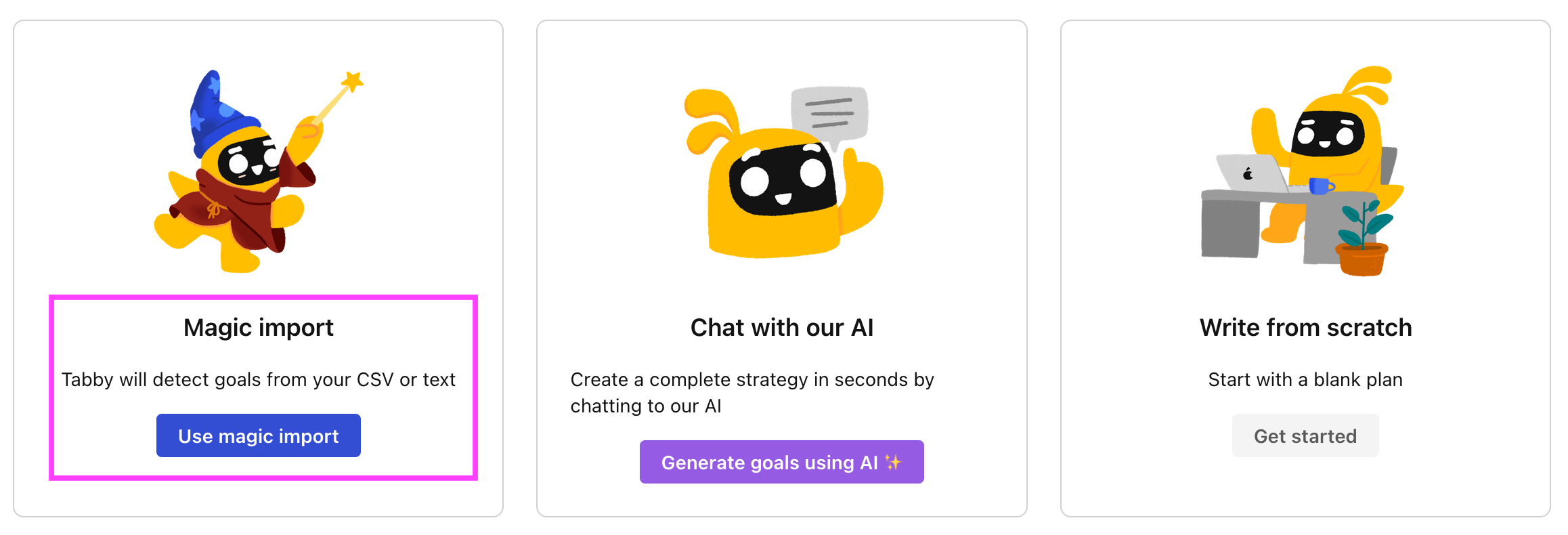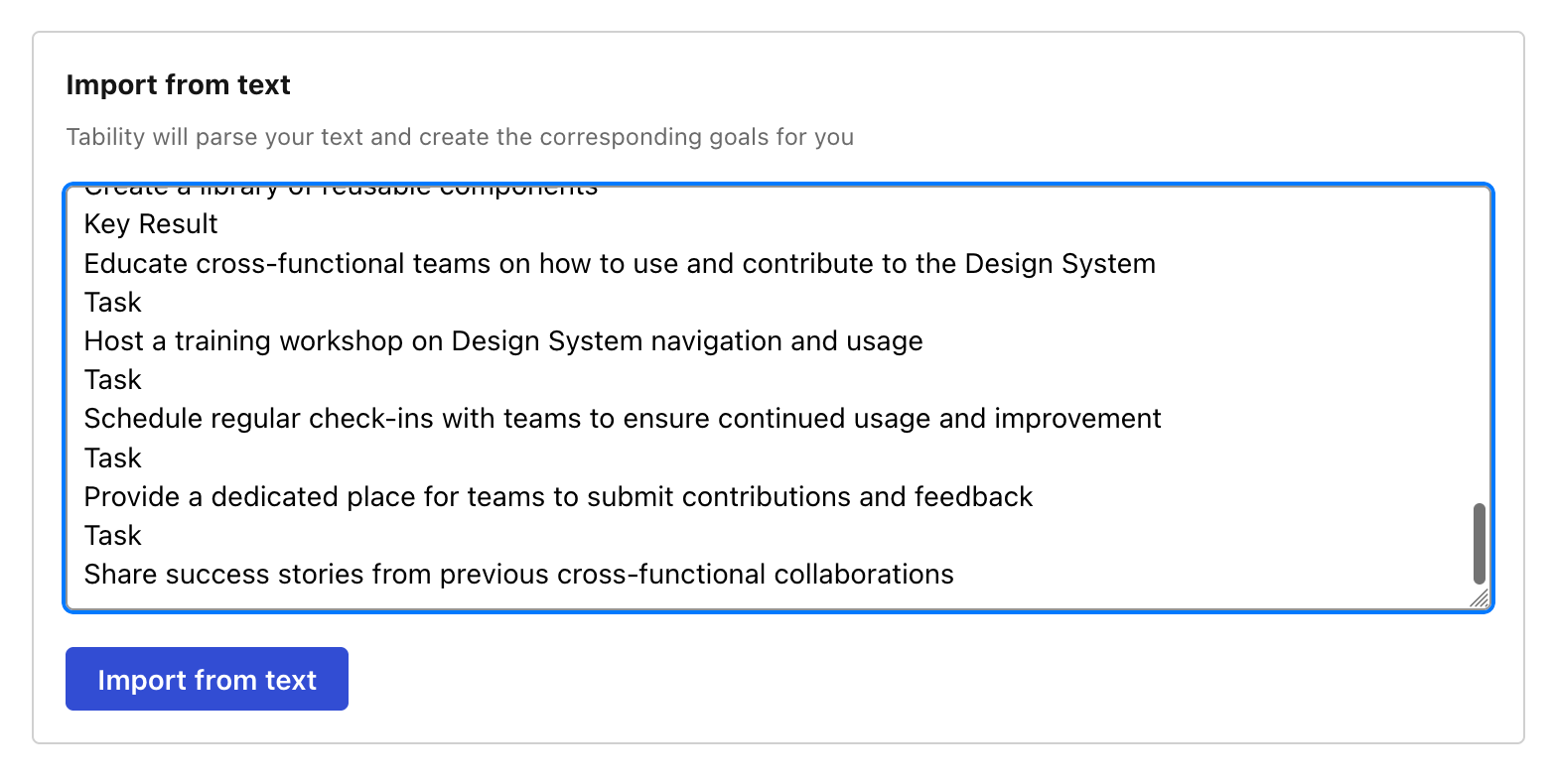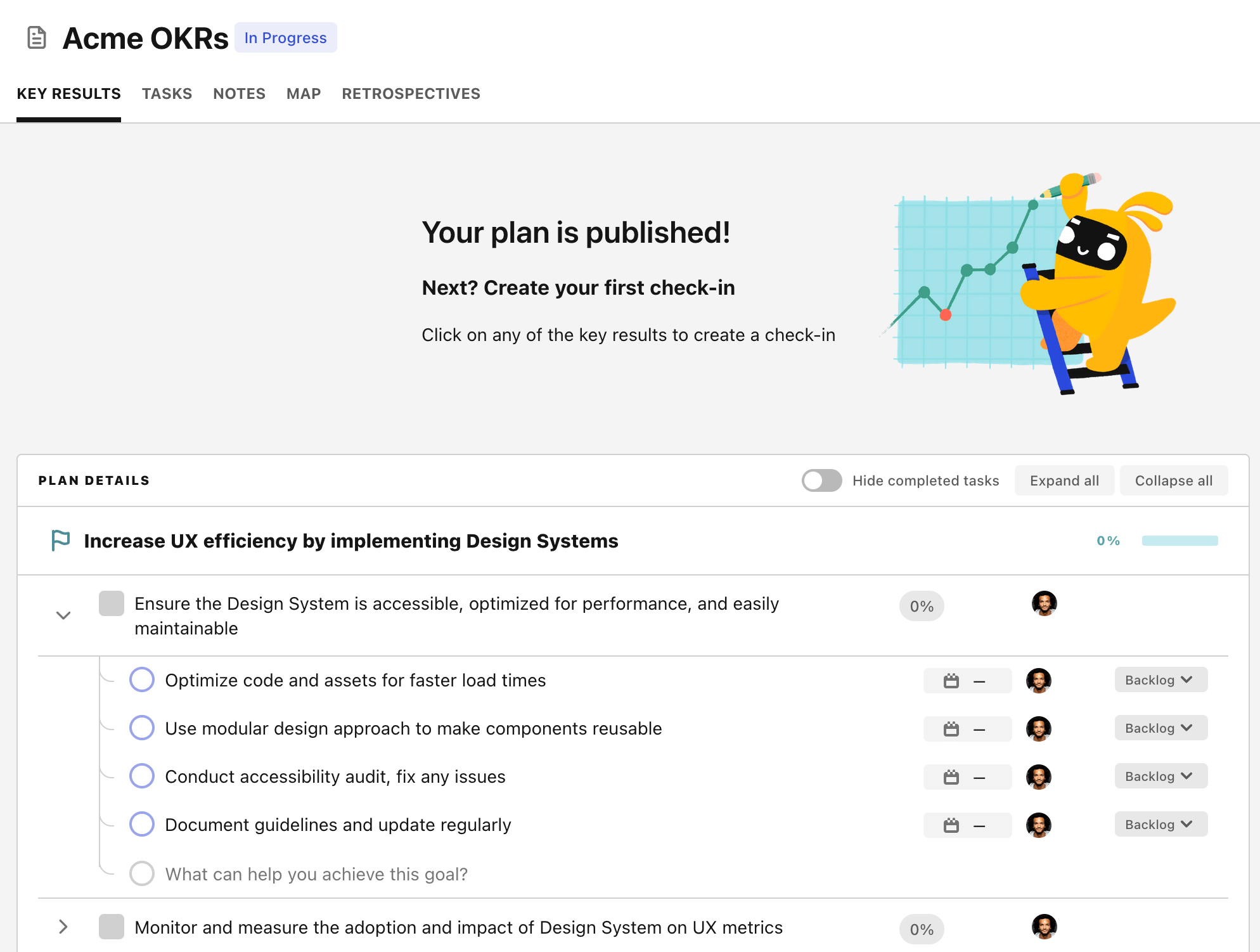OKR template to enhance proficiency in visual and UX design
Your OKR template
Next, the other deliverable stated under this OKR is creating 5 distinct visual design projects. This objective involves finalizing and creating several visual designs, sketching initial concepts for each project and compiling a list of themes for each visual design project.
The final target of this OKR is to finish 3 advanced UX design courses. Accordingly, the user needs to research and select these courses, complete coursework and assignments diligently, and formally enroll in each selected course.
This entire OKR strategy is slated towards gaining comprehensive skills in visual and user experience design. It involves a mix of self-improvement actions and output-oriented tasks that culminate in becoming proficient in visual and UX design.
ObjectiveEnhance proficiency in visual and UX design
KRObtain certified UX design professional assessment
KRCreate 5 visual design projects
Finalize and create your visual designs
Sketch initial concepts for each project
Compile a list of themes for each visual design project
KRComplete 3 advanced UX design courses
Research and select 3 advanced UX design courses
Finish coursework and assignments diligently
Enroll in each chosen course
How to edit and track OKRs with Tability
You'll probably want to edit the examples in this post, and Tability is the perfect tool for it.
Tability is an AI-powered platform that helps teams set better goals, monitor execution, and get help to achieve their objectives faster.
With Tability you can:
- Use AI to draft a complete set of OKRs in seconds
- Connect your OKRs and team goals to your project
- Automate reporting with integrations and built-in dashboard
Instead of having to copy the content of the OKR examples in a doc or spreadsheet, you can use Tability’s magic importer to start using any of the examples in this page.
The import process can be done in seconds, allowing you to edit OKRs directly in a platform that knows how to manage and track goals.
Step 1. Sign up for a free Tability account
Go tohttps://tability.app/signup and create your account (it's free!)
Step 2. Create a plan
Follow the steps after your onboarding to create your first plan, you should get to a page that looks like the picture below.

Step 3. Use the magic importer
Click on Use magic import to open up the Magic Import modal.
Now, go back to the OKR examples, and click on Copy on the example that you’d like to use.

Paste the content in the text import section. Don’t worry about the formatting, Tability’s AI will be able to parse it!

Now, just click on Import from text and let the magic happen.

Once your example is in the plan editor, you will be able to:
- Edit the objectives, key results, and tasks
- Click on the target 0 → 100% to set better target
- Use the tips and the AI to refine your goals
Step 4. Publish your plan
Once you’re done editing, you can publish your plan to switch to the goal-tracking mode.

From there you will have access to all the features that will help you and your team save hours with OKR reporting.
- 10+ built-in dashboards to visualise progress on your goals
- Weekly reminders, data connectors, and smart notifications
- 9 views to map OKRs to strategic projects
- Strategy map to align teams at scale